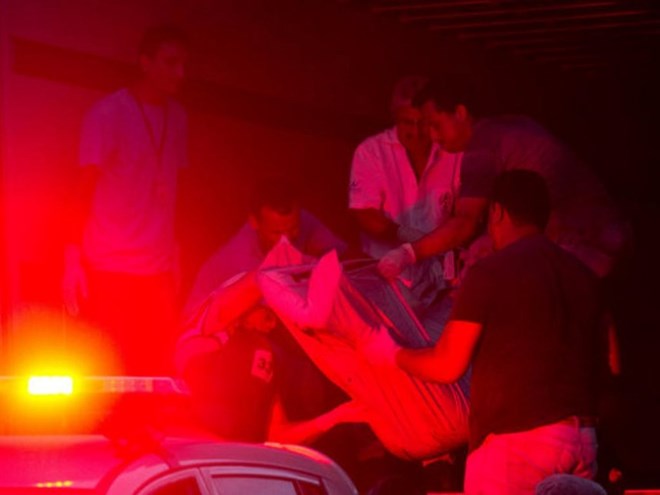
Monday, January 16, 2017

The bodies of inmates arrive at the Institute of Forensic Science after they were killed in a prison riot in Natal, Rio Grande do Norte state, Brazil, January 15, 2017. /REUTERS
Twenty-seven inmates were killed in a Brazilian prison riot that broke out on Saturday, adding to chaos in a penitentiary system in which some 140 inmates have died in gang warfare since the start of the year.
Members of a drug gang started the clash by invading a pavilion in the Alcaçuz prison that housed rivals, officials with Rio Grande do Norte state said in a Sunday news conference in the city of Natal. Forensic investigators will begin identifying the corpses on Monday, they added.
Police surrounded the prison overnight, but waited until noon to enter because of reports that inmates remained armed and out of their cells. Nine inmates injured in the clash were taken to hospitals near the Alcaçuz facility, officials said.
As with other prison riots across the country earlier this month, almost all the inmates killed were decapitated, with some bodies being partially burned, a person with knowledge of the situation told Reuters. Police have identified the six prisoners who led the riot and may transfer them to federal prisons, the person said.
Behind the bloodshed in some of the nation's prisons is an escalating feud between some of Brazil's most powerful drug gangs, which ended two decades of an uneasy working relationship about six months ago.
"There is no confirmation of this, but all the recent riots across Brazil might have created an incentive for this one," said Wallber Virgolino, the state's justice secretary. "Our state had never seen such a bloody prison uprising."
Brazil's deadliest jail uprisings in decades have exposed growing turf wars between São Paulo-based gang Primeiro Comando da Capital, or PCC, and the Rio de Janeiro-based Comando Vermelho that risk plunging a chaotic penitentiary system deeper into violence.
Their split, which is thought to have happened last year, has unleashed a war with state prisons as their epicenter. The Rio gang has teamed up with five fellow groups around Brazil to counter the PCC's growing might.
The last time that Brazil witnessed such a long span of drug-related violence was in May 2006, when the PCC unleashed attacks across the state of São Paulo.
According to the newswire service of O Globo newspaper, the PCC was the drug faction behind the killings in Alcaçuz, a facility outside Natal, the capital of Rio Grande do Norte state. Alcaçuz has about 1,150 prisoners and capacity for 620 detainees.
Part of the fourth pavilion of the Alcaçuz prison, where the uprising broke out, was damaged as prisoners set fires and damaged pipes and electricity wiring. There is no timetable for a remodeling of the pavilion, Virgolino added.
Earlier on Sunday, Justice Minister Alexandre de Moraes vowed to extend financial and security support for Rio Grande do Norte to prevent further prison uprisings.
Moraes authoriSed the state to use some of the 13 million reais ($4 million) wired in recent days to upgrade and acquire prison equipment.